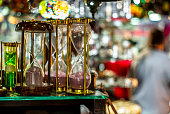Speakeasy

본문
Speakeasy
A speakeasy is a time period used to describe a secret or illicit bar that was in style through the Prohibition period within the United States, which lasted from 1920 to 1933. These establishments have been known for their hidden entrances and for serving alcohol regardless of it being illegal on the time. Here are some key factors about speakeasies:
- Origin: The time period "speakeasy" is believed to have originated from the follow of consumers speaking quietly or "easily" to avoid drawing attention.
- Hidden Locations: Many speakeasies have been located in basements, behind unmarked doorways, and even in respectable companies like soda shops.
- Entertainment: These venues often featured stay music, dancing, and other types of entertainment, hiop making them in style gathering spots.
- Cultural Impact: Speakeasies played a vital function in shaping the culture of the Roaring Twenties and the jazz age.
- Modern Revival: Today, the concept of the speakeasy has made a comeback, with many bars adopting the hidden, secretive theme to create an exclusive ambiance.
Below are some famous speakeasies from history:
- The Cotton Club (New York City)
- 21 Club (New York City)
- The Green Mill Cocktail Lounge (Chicago)
- Schroeder's (San Francisco)
In summary, speakeasies supply a fascinating glimpse into a singular chapter of American history, highlighting themes of rebellion, creativity, and the battle for personal freedom.
A speakeasy is a hidden bar or nightclub that originated in the course of the Prohibition period in the United States (1920-1933). These institutions have been illicit and served alcohol when it was illegal to do so. Here are some key factors about speakeasies:

- Origin: The term "speakeasy" supposedly comes from patrons talking quietly or "easily" to avoid detection by legislation enforcement.
- Atmosphere: Speakeasies usually have a secretive vibe, with dim lighting, vintage décor, and a way of exclusivity.
- Access: Many fashionable speakeasies preserve the idea of secrecy with hidden entrances or requiring a password for entry.
- Cocktails: These venues often serve craft cocktails, reviving traditional recipes from the Prohibition era.
- Cultural Significance: Speakeasies symbolize the fight in opposition to prohibition legal guidelines and a spirited nightlife culture.
Today, speakeasies have made a resurgence as trendy bars that commemorate the fashion and spirit of the Nineteen Twenties and Thirties.
Speakeasies have been secret bars that emerged in the course of the Prohibition period within the United States, which lasted from 1920 to 1933. These hidden establishments allowed patrons to devour alcohol regardless of its legality being prohibited.
Typically accessed via an unmarked door or a password, speakeasies supplied a sense of thrill and exclusivity. They had been usually situated in basements, back rooms, or behind false storefronts, making them tough to discover.
In these illicit venues, live jazz music thrived, as they grew to become the cultural hubs for the Jazz Age. The environment was energetic, filled with dance and revelry. Women typically wore flapper clothes, symbolizing the altering social norms of the time.
Today, the time period "speakeasy" has been revived, with fashionable bars adopting the aesthetic and secretive allure of their Prohibition-era counterparts. Many feature vintage decor, craft cocktails, and live music, providing a nostalgic glimpse into a fascinating chapter of American historical past.
In essence, speakeasies embody a spirit of rebellion and creativity, reflecting the social dynamics of their time.

댓글목록0
댓글 포인트 안내